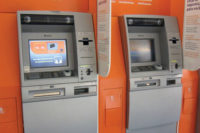What if, unlike the usual evolution of security technologies, we were able to skip the digital stage and move right from analog to a virtual matrix switch that is integrated into the larger security system? Virtual matrix switch technology represents a leap in the usual evolutionary path as it skips an entire generation.
A virtual matrix switch solution can transform a user's existing computer equipment and network cabling into a digital video matrix switch. It provides full analog matrix functionality, using a standard matrix keyboard, to give the user comprehensive control of the security system. The virtual matrix switch is an enabling technology that heretofore had not taken hold because of sheer cost – hardware and wiring costs were very limiting. A virtual matrix switch uses the technology on one's desk to empower anybody in the organization that can log on to the network to get access to the video – with no software required. Once data and information becomes available in an efficient, low-cost manner across the entire organization, widespread implications emerge for security and beyond. How does this groundbreaking technology work?
Until recently, traditional analog video matrix systems have been the dominant method of routing closed circuit video signals. The outputs of the cross-point matrix are usually attached to text generators used to apply time, date and camera name information to the video signal before it is displayed on a video monitor device. The cross-point matrix and text generators along with user keyboards, GUIs, and other security specific I/O devices are then connected to a CCTV matrix system controller to provide full-featured surveillance functionality.
An analog signal, by nature, is very fragile. It is protected by a specialized coaxial cable network that connects all signal inputs directly to the switching matrix. Even the coaxial cables, however, cannot protect this delicate signal over distances in excess of nine hundred feet. Other transmission systems, such as fiber optics or analog over phone wiring, for lower quality applications, can be used. But in many instances there are no coaxial or fiber optics cables available, and new cables are often costly to install, particularly where trenching or firewalls are involved. Increasingly complex security conditions have created strong demand for an innovative, comprehensive solution. New video and voice-over-IP technology has emerged as a low-cost alternative to the traditional point-to-point dedicated systems.
The Virtual in the Matrix
Digital networks deliver significant advantages over other transmission methods, including improved signal integrity over longer distances and compatibility with off-the-shelf IT hardware. These networks allow security video, access control and intercom data to be efficiently "routed" through local and wide area networks (LAN/WAN) and more specifically through the Internet. The network routing of video is functionally equivalent to the role of the analog cross-point matrix in the legacy matrix system, but it is instead distributed throughout the network infrastructure. In this digital domain manner, the network supplants the centralized "iron" and coaxial jungle of the matrix system. Only the keyboards, controller and text overlays are left intact to preserve the user experience of the legacy matrix system, while still delivering the robust functionality of a full-featured matrix switch. And why not? The smarts of the analog matrix switch are in the matrix controller. It's a computer; so it is already digital. The virtual matrix switch maintains the integrity and full rich functionality of the matrix controller while replacing only the costly analog switch fabric with the network.For all intents and purposes, the network represents a cross-point matrix – it is, in fact, a virtual video cross-point matrix. The necessary first step in realizing the virtual video matrix is to digitize the video signal for transmission over the network using a video encoder for each camera. Encoders are widely available, but not all are suitable for security applications. Some use inefficient compression techniques such as JPEG or Wavelet; whereas the best encoders are designed to supply a digital, highly efficient MPEG-4 stream with independent channels to support recording and viewing.
Connections for video and PTZ control signals from each camera are connected to the encoder via coax and serial data wiring. Encoders also have inputs to support sensing of alarm contacts and outputs to control relays or to signal other alarm sensing equipment. Two-way audio is available as an encoder option, which allows recording and live monitoring of an encoder-attached microphone and audio output to an encoder-attached speaker. The next step is to connect the encoder via an available CAT5 or CAT3 cable to the nearest network switch or routing element. Once video signals are present on the network, there are a number of important security applications that are now enabled including video recording and archiving, live viewing and PTZ camera control. Other security systems can be integrated and available in one user interface such as access control and supervisory control and data acquisition (SCADA).
Virtual Matrix Advantages and Applications
Consider the following scenario. A company has a campus of buildings with a receptionist or a security guard monitoring the main entrance of each building. At lunchtime, the person responsible for a particular building can switch to an automated mode so that another staff member can take control of that entrance. Remotely, the lunchtime replacement is able to monitor two-way video and control PTZ cameras for a better look whenever needed. This system is set so that if someone attempts to enter the building without authorization, an alarm will sound. Upon alarm, our cover person has two-way audio functionality as well as remote, automatic control of the building doors. This level of integrated control is repeated throughout the campus of buildings anywhere along the network.Notwithstanding the advantages outlined above, is the elimination of the digital matrix box evolutionary stage really that significant? Consider the following specific user benefits that flow from implementing a virtual matrix solution in nearly any enterprise-level security environment:
There's no need to purchase and install the analog switching fabric of a legacy matrix. In addition, the hassle and expense of installing coaxial cables throughout the facility is eliminated.
Virtual matrix switch technology makes it possible to leverage what's already on your desk: computer, monitor and network. And it's hardware agnostic, so the end user maintains flexibility and cost control over critical hardware decisions.
More than a Cost Center
Every analog matrix switch in existence has costly, cumbersome scaling limitations. For example, adding a 33rd monitor to a system requires the addition of shelves of matrix switching equipment. Not so with an integrated, software-based matrix system. You need only add licenses and encoders in the increments desired, from as small as one to any number of cameras and/or monitors to be added to the system.Enterprise-level security operations require customized installation with significant costs for the specialized equipment and wiring needed to bring analog signals back to the mainframe, not to mention the distance limitations as well. Virtual matrix technology surmounts these costly, time-consuming demands.
When the security operation needs to move, relocation costs and miles of wasted coaxial cable represent a major consideration. Virtual matrix technology provides the flexibility to meet the demands of today's "turn-on-a dime" business environment.
Upgrading from an analog to a digital matrix box doesn’t extend the availability of video information. But, when integrated into a networked video system, the virtual matrix switch provides wide area connectivity and video data becomes available enterprise-wide.
A virtual matrix switch helps transform the security operation from a cost center into an integral part of the enterprise that has the potential to improve productivity and even generate revenue. Video for the first time becomes available throughout the enterprise instead of being seen as a major expense devoted solely to risk mitigation; the virtual matrix allows organizations to fully leverage their security investment. With this level of access and functionality, human resources now have a visitor monitoring system. Operations have the ability to monitor traffic in loading dock areas. Retail operations can prevent overloading in cash register lines and marketing can remotely monitor the level of interest shown at product displays in stores.
The virtual matrix switch lays the foundation to enable the combination of three essential security technologies: the DVR, the multiplexer and the matrix switch. Integrated in this fashion, the whole is most certainly more powerful than the sum of its parts.

